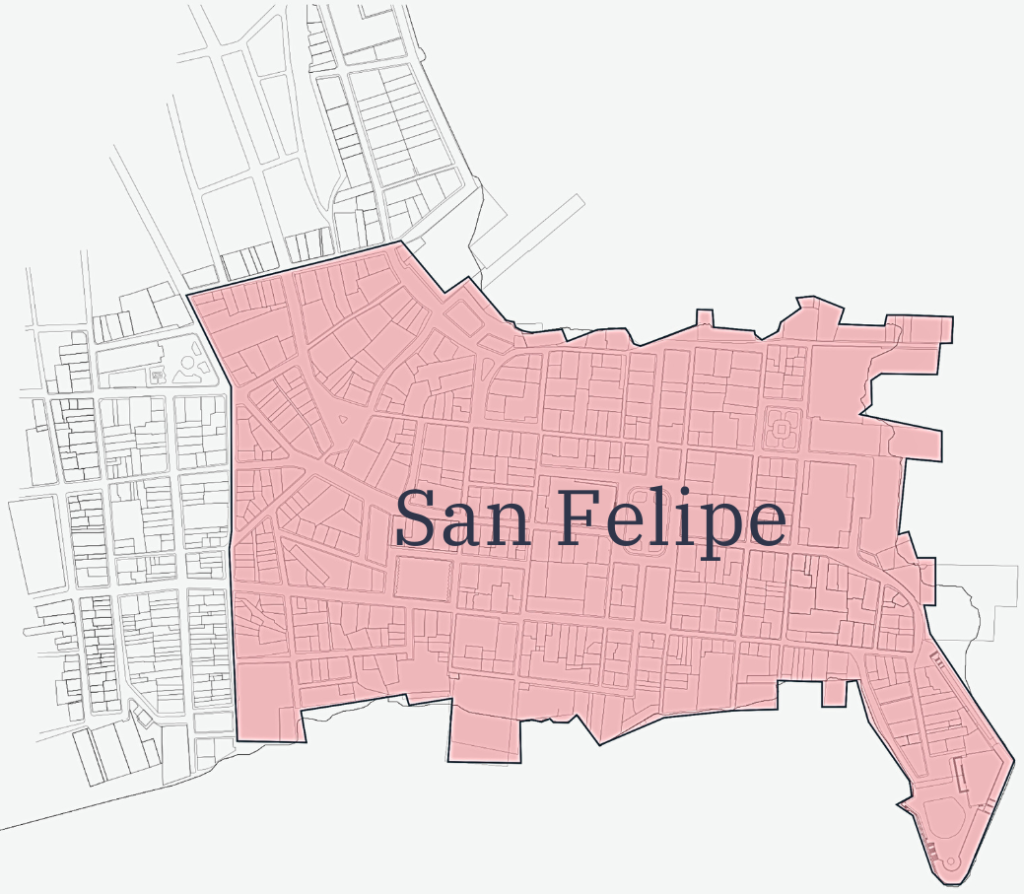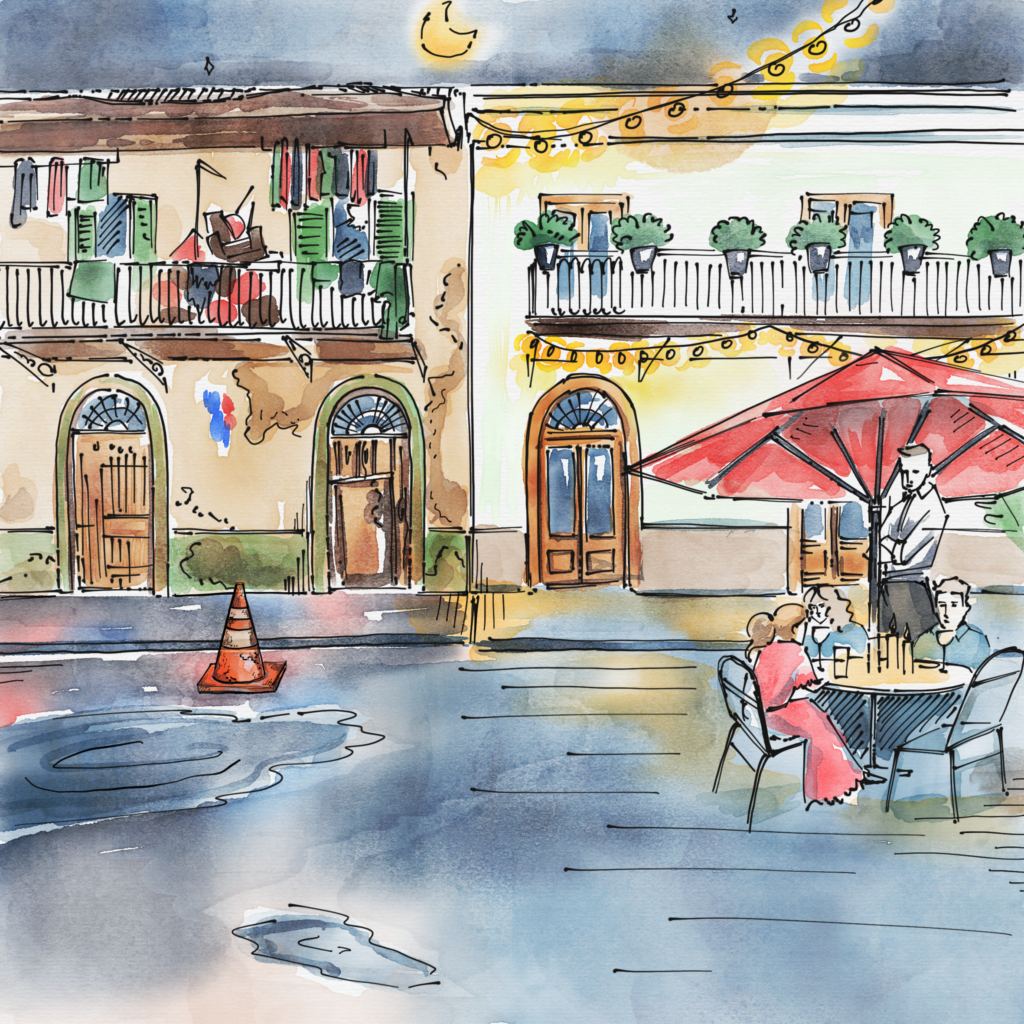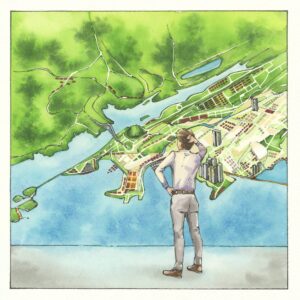Over the last couple of weeks, Casco Viejo has been trending in local news and on social media. The discussion is about the Electoral Register (the “Padrón Electoral”), specifically as it relates to the San Felipe area of Casco Viejo. The national census that was performed earlier this year have brought to light some concerning discrepancies.
Put simply, it looks like a lot more people voted in the last elections than there are eligible voters actually living in San Felipe.
OK, so this is clearly “no bueno” – but you may wonder why I am writing about this since it seems to be a story about very localized politics. That’s a fair question. But some of you may find this interesting, as Casco Viejo is a very popular neighborhood among expats and some of my clients. Not only that – this situation is partially the result of the changing demographics of San Felipe. So, any of us who live or have lived in San Felipe during the last several years are, in a way, part of this story.
This article will attempt to give a short, high-level overview of what is going on in San Felipe and why it has put Casco Viejo in the news. If you want to read about it in Spanish, then most of what I am writing here comes from this article in La Prensa (sorry for the paywall).
In case you already know something about this story and want to jump ahead, I’ll be explaining the story from the following angles and in the following order:
- Understanding Panama’s Corregimiento Divisions
- Demographic Changes in San Felipe
- The 2023 National Census
- The 2019 Election
This article does not purport to judge or to make any accusations against anyone in particular. All of this is public information, and I just hope it will be informative for people who may not usually keep up with stories like this in Panama.
Understanding Panama’s Corregimiento Divisions
First for some context, you need to understand how Panama is geographically divided up and governed:
COUNTRY > PROVINCES > DISTRICTS > CORREGIMIENTOS
The whole country is divided up into provinces (10 provinces + 4 indigenous regions). Each province is then divided into municipal districts, when are then sub-divided into administrative zones called corregimientos.
For example, let’s say you have decided to retire to Boquete, and you buy a little apartment right in town. You are now a resident of the corregimiento of Bajo Boquete, which sits within the larger Boquete District, which is within the even larger Chiriquí Province.
Corregimientos are an important part of governance in Panama, as they are local extension of the broader municipality that governs a respective district. And while each municipal district is headed by an elected Mayor, elections are also held in each corregimiento every 5 years to choose among candidates for a position known as the Representante.
The last elections for Representante were in 2019, and the next ones are coming up in 2024.
And for some additional new vocabulary, the Representante presides over what is called the Junta Comunal. This is a local administrative body that purports to provide a space for local citizens in each corregimiento to participate and interface with the government.
Demographic Changes in San Felipe
San Felipe is a small corregimiento in the Casco Viejo neighborhood of Panama City. It is part of the municipal District of Panama and the larger Panamá Province.
Actually, the Casco Viejo neighborhood sits over 3 different corregimientos: San Felipe, Santa Ana and El Chorrillo. But San Felipe is the only corregimiento that is entirely within the area designated as Casco Viejo.

San Felipe is the most “developed” area of Casco Viejo. It isn’t really the late-night dance-club side of Casco. Rather, it is the nice-hotel, sit-down-restaurant side of Casco. It is the area where most casual tourists spend time, and actually most of Casco’s expat community lives in San Felipe as well.
Up until a couple of decades ago, Casco Viejo had fallen into a state of blight. That began to change after 1997 when Casco Viejo was declared a UNESCO World Heritage site, and legislation was created to incentivize restoration of the mix of low-rise Spanish and French colonial buildings that charactarize the area. Since then, Casco Viejo has undergone a major revitalization as property owners and developers have restored many of the dilapidated properties one by one.
The process really gained momentum during the last 12 years or so, and much of Casco Viejo has now been fully restored and developed as a mix of hotels, condo apartments, restaurants and retail spaces. Casco Viejo has a strong, growing and increasingly linked expat community. Casco Viejo – and San Felipe in particular – now offers some of the most expensive real estate in the country, and it competes with the Canal as one of the most popular tourism destinations in Panama City.
And there is one more important detail. As property values have risen in San Felipe, much of the local population has moved out. As cool as Casco Viejo is, it is probably one of the least affordable and least practical neighborhoods in Panama City for most local Panamanian families (and voters).
The 2023 National Census
If you were in Panama during the first part of this year, you probably saw the census takers out and about and knocking on doors.
Panama generally updates its census every 10 years. The most recent census should have been carried out during 2020 (since the last one was taken in 2010), but it was delayed due to the Covid-19 lockdowns that shut down the country during much of that year. Actually, one might think that 2020 would seem to have been the easiest time ever to perform a proper counting of the population – but I suppose there are plenty of valid reasons why it would have been delayed… for 3 years…
Anyway – the census data is now being analyzed, and some of the results have been announced. And it turns out that there were just 1,258 people living in the corregimiento of San Felipe according to the census. And after accounting for foreigners and minors, there were less than 700 eligible voters living in San Felipe. This comes from the local papers, so it isn’t my analysis.
The 2019 Election
Ok, so the 2023 census tells us that there were less than 700 voting-age, voting eligible citizens actually residing in the San Felipe corregimiento. However, according to the Electoral Register (the “Padrón Electoral”) there are nearly 3,900 voting-age, voting eligible citizens registered as living in San Felipe.
That’s a huge discrepancy, but we can imagine how that might happen. People move away and may never update their address in the Electoral Register. But what is more important is the fact that a bunch of those people appear to have continuned voting in San Felipe’s elections.
To be more precise, apparently 2,674 people voted in 2019 elections for the local Representante in San Felipe, with the winner alone receiving 1,122 votes.
Again, this is not my primary research. I just read the newspaper, which said (translating and paraphrasing), “The numbers don’t add up in the corregimiento of San Felipe.”
Why is this so Important?
People are talking about this for a variety of reasons:
FIRST – Fair elections are a foundation of representative democracy, and most would probably agree that they are worth protecting and defending.
SECOND – There is a saying that goes, “Never attribute to malice that which can be adequately explained by neglect, ignorance or incompetency.” However, it is hard to imagine that this happened purely by accident, given that a bunch of people apparently made an effort to vote in a corregimiento in which they no longer live.
THIRD – One cannot help but wonder how long this may have been going on. Actually, some of the folks in Casco Viejo have suspected that there were more people voting in the the elections than actual residents for quite some time. It was a topic of discussion among residents even dating back to the previous election in 2014. But it didn’t really capture the attention of the media until the results of the 2023 census were announced.
FOURTH – One may also wonder if this problem could be more widespread. Might this sort of thing happen in other corregimientos as well?
FIFTH – Money. There are substantial public funds generated from the government’s collection of property taxes that are channeled toward many of the differentcorregimientos around the country. For example, according to La Prensa, there was apparently around $461k funded to San Felipe’s Junta Comunal during 2022 and the first part of 2023. So there is substantial funding at play.
SIXTH – This is not necessarily an easy issue to unwind in anticipation of next year’s elections right around the corner. The current Representante for San Felipe has served 5 uninterrupted terms. Needless to say, there are other candidates vying for the position in 2024.
Bottom Line?
This is a story that is unfolding in real time, so this article is not intended to be conclusive. Nor does it purport to express a political opinion. I am just summarizing a current news story for my English-speaking audience. And it is an important story, because it is likely to have a pretty significant impact in Casco Viejo and the upcoming elections, and potentially in other parts of Panama as well.
Or there is also the possibility that nothing really happens at all and then the public soon gets distracted by something else in the news cycle… Only time will tell.
Do you think I missed something or got a detail wrong in this story? I’ve done my best to get it right. But my goal is to be helpful and informative, so I would appreciate any comments or feedback that you’d like to share with me info@theindependentlawyer.com.







